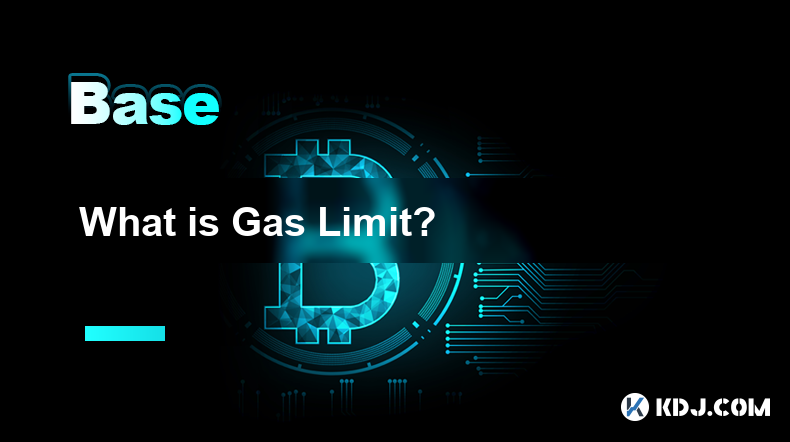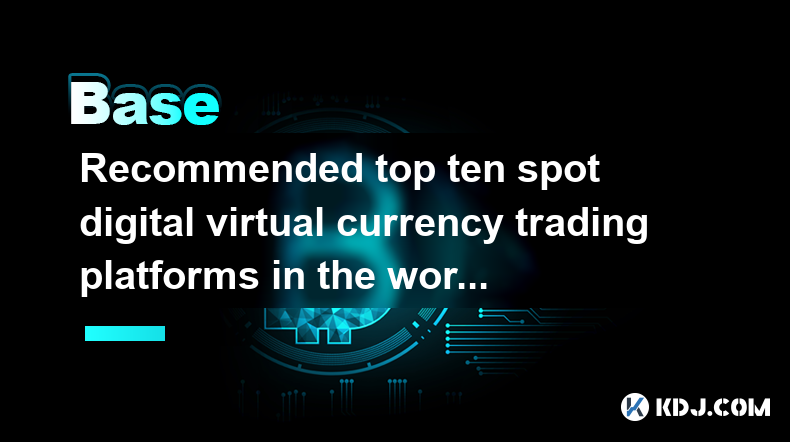-
 Bitcoin
Bitcoin $87,915.1013
4.01% -
 Ethereum
Ethereum $1,626.0336
3.05% -
 Tether USDt
Tether USDt $1.0002
0.03% -
 XRP
XRP $2.1225
3.25% -
 BNB
BNB $603.9394
2.51% -
 Solana
Solana $138.6104
1.03% -
 USDC
USDC $1.0000
0.01% -
 Dogecoin
Dogecoin $0.1612
4.65% -
 TRON
TRON $0.2431
-0.84% -
 Cardano
Cardano $0.6407
4.19% -
 Chainlink
Chainlink $13.4436
2.16% -
 Avalanche
Avalanche $20.5554
5.48% -
 UNUS SED LEO
UNUS SED LEO $9.0885
-2.49% -
 Stellar
Stellar $0.2597
7.37% -
 Toncoin
Toncoin $3.0010
0.25% -
 Shiba Inu
Shiba Inu $0.0...01257
1.68% -
 Sui
Sui $2.2420
6.60% -
 Hedera
Hedera $0.1711
4.33% -
 Bitcoin Cash
Bitcoin Cash $344.5133
3.21% -
 Polkadot
Polkadot $3.9101
1.15% -
 Hyperliquid
Hyperliquid $18.1893
5.38% -
 Litecoin
Litecoin $80.0892
5.05% -
 Bitget Token
Bitget Token $4.4777
1.97% -
 Dai
Dai $1.0000
0.00% -
 Ethena USDe
Ethena USDe $0.9994
0.01% -
 Pi
Pi $0.6362
1.91% -
 Monero
Monero $214.2887
-0.67% -
 Uniswap
Uniswap $5.4298
4.03% -
 Pepe
Pepe $0.0...07950
6.54% -
 Aptos
Aptos $5.1342
2.79%
What is Gas Limit?
Ethereum's Gas Limit sets a maximum computational cost for transactions, preventing overspending. A too-low limit causes failure; too high wastes funds. Gas Limit, multiplied by Gas Price, determines the total transaction fee.
Mar 26, 2025 at 04:00 am

Key Points:
- Gas Limit defines the maximum amount of computational effort a user is willing to spend on a transaction on the Ethereum blockchain.
- It's measured in gas units, each with a fluctuating price in ETH. The total cost is Gas Limit multiplied by Gas Price.
- Setting a too-low Gas Limit can result in transaction failure, while setting it too high unnecessarily increases costs.
- Understanding gas and gas limits is crucial for efficient and cost-effective Ethereum transactions.
- Different transactions require varying amounts of gas, depending on their complexity.
What is Gas Limit?
The term "Gas Limit" in the context of Ethereum and other similar blockchains refers to the maximum amount of computational resources a user is willing to expend on a single transaction. Think of it like setting a spending limit on your debit card – you're pre-authorizing a maximum amount to be spent. However, instead of fiat currency, the "spending" is in units of gas, and the limit is set in those gas units. This limit directly impacts the transaction fee.
How Gas Limit Works
Every operation performed on the Ethereum blockchain consumes a certain amount of gas. This gas consumption depends on the complexity of the operation. For instance, a simple token transfer requires less gas than a complex smart contract interaction. The Ethereum Virtual Machine (EVM) meticulously tracks gas usage for each step of a transaction. If the transaction's gas usage exceeds the predefined Gas Limit, the transaction is reverted, and the already consumed gas is still burnt, resulting in a loss of ETH.
Setting the Gas Limit:
The Gas Limit isn't automatically determined; it's a parameter you, as the user, must specify when initiating a transaction. Most wallets provide a suggested Gas Limit based on the transaction type. However, it's crucial to understand that this suggestion might not always be optimal.
Factors Affecting Gas Limit:
Several factors influence the appropriate Gas Limit for a transaction. These include:
- Transaction Type: Simple transfers need less gas than interactions with decentralized applications (dApps).
- Network Congestion: During periods of high network activity, the suggested Gas Limit might be higher to ensure transaction success.
- Smart Contract Complexity: Complex smart contracts require significantly more gas than simpler ones.
Gas Price vs. Gas Limit:
It's vital to distinguish between Gas Limit and Gas Price. Gas Limit is the maximum amount of gas you're willing to use, while Gas Price is the cost of each unit of gas in ETH. The total transaction fee is calculated by multiplying the Gas Limit by the Gas Price. Therefore, a high Gas Limit with a low Gas Price might result in a lower overall fee than a low Gas Limit with a high Gas Price, depending on the actual gas used.
What Happens if the Gas Limit is Too Low?
If the Gas Limit is set too low and the transaction requires more gas than allowed, the transaction will fail. The blockchain will revert the changes, and you will lose the gas already consumed. This is why it’s important to set a Gas Limit that's sufficiently high to accommodate the transaction's needs.
What Happens if the Gas Limit is Too High?
Setting a Gas Limit excessively higher than necessary will simply result in paying more in transaction fees. You'll be paying for unused gas, increasing the overall cost of your transaction without any added benefit. It's wasteful and inefficient.
How to Determine the Appropriate Gas Limit:
There's no single magic number for the Gas Limit. It varies depending on the transaction. However, here's a general approach:
- Use your wallet's suggestion: Most wallets offer a suggested Gas Limit, which is a good starting point.
- Monitor network conditions: During periods of high congestion, you might need to increase the suggested Gas Limit slightly.
- Experiment (carefully): For complex transactions, you might need to experiment with slightly higher Gas Limits to ensure success, but always start with the suggested limit.
- Use Gas Limit Estimation Tools: Various third-party tools offer Gas Limit estimation for different transaction types.
Understanding Gas Units:
Gas units are a fundamental unit of measurement on the Ethereum blockchain, representing the computational work required to execute a specific operation. They are not directly tied to a specific monetary value; instead, the value is determined by the Gas Price, which fluctuates based on network demand. A higher Gas Price means each unit of gas costs more in ETH.
Why is Gas Limit Important?
Understanding and correctly setting the Gas Limit is crucial for several reasons:
- Cost Efficiency: A properly set Gas Limit ensures you pay only for the computational resources actually used.
- Transaction Success: An insufficient Gas Limit will lead to transaction failure and wasted ETH.
- Effective Resource Management: Proper Gas Limit management contributes to the overall efficiency and stability of the Ethereum network.
Frequently Asked Questions:
Q: What happens if my transaction runs out of gas before completion?
A: The transaction will be reverted, meaning it's undone, and you'll lose the gas already consumed. All changes made during the transaction will be rolled back.
Q: Can I change the Gas Limit after submitting a transaction?
A: No, once you submit a transaction with a specific Gas Limit, you cannot change it.
Q: How do I find the current Gas Price?
A: Many websites and tools display real-time Gas Prices. Your wallet typically also shows the current suggested Gas Price.
Q: Is there a risk of setting the Gas Limit too low?
A: Yes, a too-low Gas Limit guarantees transaction failure and loss of the already consumed gas.
Q: How does network congestion impact Gas Limit?
A: During network congestion, the demand for block space increases, leading to higher Gas Prices. You might need a slightly higher Gas Limit to ensure your transaction gets included in a block.
Q: Are there any tools to help me estimate the Gas Limit?
A: Yes, several websites and tools offer Gas Limit estimation services, providing suggestions based on the transaction's complexity. However, these are estimates and not guarantees.
Q: What's the difference between Gas Limit and Gas Used?
A: Gas Limit is the maximum gas you're willing to spend, while Gas Used is the actual amount of gas consumed by your transaction. The difference between the two is refunded.
Disclaimer:info@kdj.com
The information provided is not trading advice. kdj.com does not assume any responsibility for any investments made based on the information provided in this article. Cryptocurrencies are highly volatile and it is highly recommended that you invest with caution after thorough research!
If you believe that the content used on this website infringes your copyright, please contact us immediately (info@kdj.com) and we will delete it promptly.
- Atok Partners with Bitgert to Advance Infrastructure and Advertising Economy in Web3 World
- 2025-04-21 23:00:13
- Pi Network (PI) Coin Could Be the Next Cryptocurrency to Launch an Exchange Traded Fund (ETF)
- 2025-04-21 23:00:13
- Strategy, the world's largest corporate Bitcoin holder, has purchased 6,556 BTC for $555.8 million
- 2025-04-21 22:55:13
- Bitcoin (BTC) Price Prediction: Arthur Hayes Hints at a Final Opportunity to Buy BTC Under $100K
- 2025-04-21 22:55:13
- Binance Adds ZORA to Spotlight Projects on Binance Alpha Alongside Other Names
- 2025-04-21 22:50:12
- Bitcoin (BTC) Price Prediction: BTC Surges Nearly 5%
- 2025-04-21 22:50:12
Related knowledge

Recommended top ten spot digital virtual currency trading platforms in the world in 2025
Apr 21,2025 at 05:15pm
Recommended top ten spot digital virtual currency trading platforms in the world in 2025 1. Binance As the world's premier cryptocurrency trading platform, Binance is known for its extensive trading pairs and efficient trading services. Its features include: High Liquidity : Binance has huge trading volumes, ensuring users can trade at the best pric...

Ranking of top ten virtual currency trading apps in the currency circle (the latest authoritative list in 2025)
Apr 21,2025 at 10:28pm
The top ten virtual currency trading apps in the 2025 cryptocurrency circle are listed as follows: 1. Binance Binance is one of the world's leading cryptocurrency trading platforms, known for its efficient trading system and extensive currency support. Binance's user interface is designed with simplicity and is suitable for beginners and profess...

What are the digital currency APP trading software in 2025? Ranking of the top ten digital virtual currency trading apps
Apr 21,2025 at 08:42pm
Ranking of the top ten digital virtual currency trading apps in 2025 1. Binance Binance continues to maintain its position as the world's leading digital currency trading platform in 2025. Its advantages include: Efficient trading volume : Binance has top trading volumes around the world, ensuring users can trade efficiently at any time. Diverse tra...

Ranking of the top ten cryptocurrency trading apps in the currency circle in 2025
Apr 21,2025 at 08:49pm
Ranking of the three major virtual currency trading applications in the currency circle Binance: The world's leading cryptocurrency trading platform Binance has always been one of the pioneers in the cryptocurrency trading world. With its huge trading volume and a wide user base, it has become one of the most popular trading platforms in the world. ...

Top 10 best virtual currency trading platforms in the world ranked latest rankings for 2025
Apr 21,2025 at 10:00pm
Top 10 Most Popular Virtual Currency Trading Platforms in the World 1.Binance Binance is one of the world's leading cryptocurrency trading platforms, and is popular for its high liquidity and rich trading pairs. Binance supports over 500 cryptocurrencies and provides fiat currency deposit and cash withdrawal services. The platform interface is user-...

A list of the top ten digital currency trading apps in the world (2025 professional authoritative list)
Apr 21,2025 at 04:00pm
A list of the top ten digital currency trading applications in the world 1. Binance As the world's largest digital currency trading platform, Binance ranks first with its huge trading volume and rich trading pairs. Binance not only supports a variety of digital currency trading, but also provides a variety of services such as leveraged trading, futu...

Recommended top ten spot digital virtual currency trading platforms in the world in 2025
Apr 21,2025 at 05:15pm
Recommended top ten spot digital virtual currency trading platforms in the world in 2025 1. Binance As the world's premier cryptocurrency trading platform, Binance is known for its extensive trading pairs and efficient trading services. Its features include: High Liquidity : Binance has huge trading volumes, ensuring users can trade at the best pric...

Ranking of top ten virtual currency trading apps in the currency circle (the latest authoritative list in 2025)
Apr 21,2025 at 10:28pm
The top ten virtual currency trading apps in the 2025 cryptocurrency circle are listed as follows: 1. Binance Binance is one of the world's leading cryptocurrency trading platforms, known for its efficient trading system and extensive currency support. Binance's user interface is designed with simplicity and is suitable for beginners and profess...

What are the digital currency APP trading software in 2025? Ranking of the top ten digital virtual currency trading apps
Apr 21,2025 at 08:42pm
Ranking of the top ten digital virtual currency trading apps in 2025 1. Binance Binance continues to maintain its position as the world's leading digital currency trading platform in 2025. Its advantages include: Efficient trading volume : Binance has top trading volumes around the world, ensuring users can trade efficiently at any time. Diverse tra...

Ranking of the top ten cryptocurrency trading apps in the currency circle in 2025
Apr 21,2025 at 08:49pm
Ranking of the three major virtual currency trading applications in the currency circle Binance: The world's leading cryptocurrency trading platform Binance has always been one of the pioneers in the cryptocurrency trading world. With its huge trading volume and a wide user base, it has become one of the most popular trading platforms in the world. ...

Top 10 best virtual currency trading platforms in the world ranked latest rankings for 2025
Apr 21,2025 at 10:00pm
Top 10 Most Popular Virtual Currency Trading Platforms in the World 1.Binance Binance is one of the world's leading cryptocurrency trading platforms, and is popular for its high liquidity and rich trading pairs. Binance supports over 500 cryptocurrencies and provides fiat currency deposit and cash withdrawal services. The platform interface is user-...

A list of the top ten digital currency trading apps in the world (2025 professional authoritative list)
Apr 21,2025 at 04:00pm
A list of the top ten digital currency trading applications in the world 1. Binance As the world's largest digital currency trading platform, Binance ranks first with its huge trading volume and rich trading pairs. Binance not only supports a variety of digital currency trading, but also provides a variety of services such as leveraged trading, futu...
See all articles






















































































